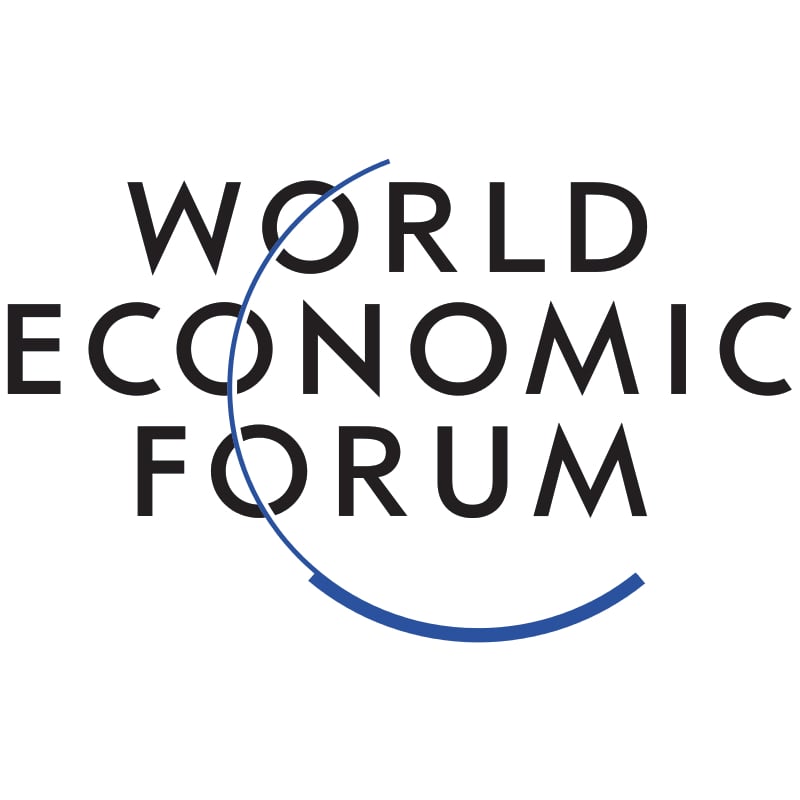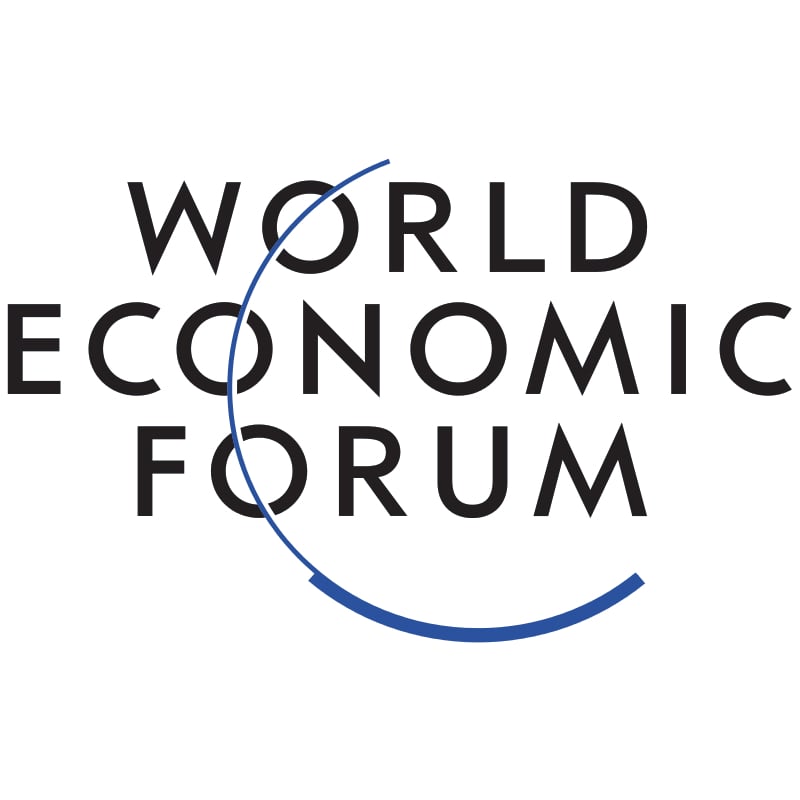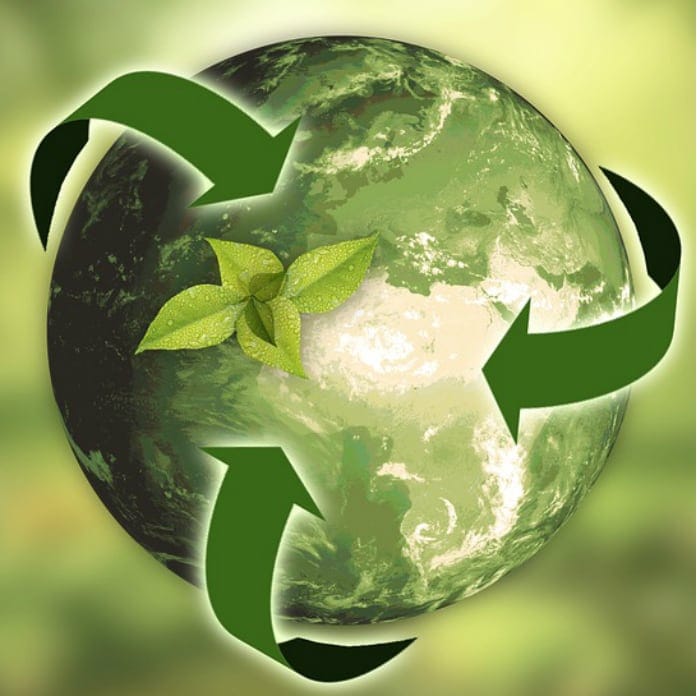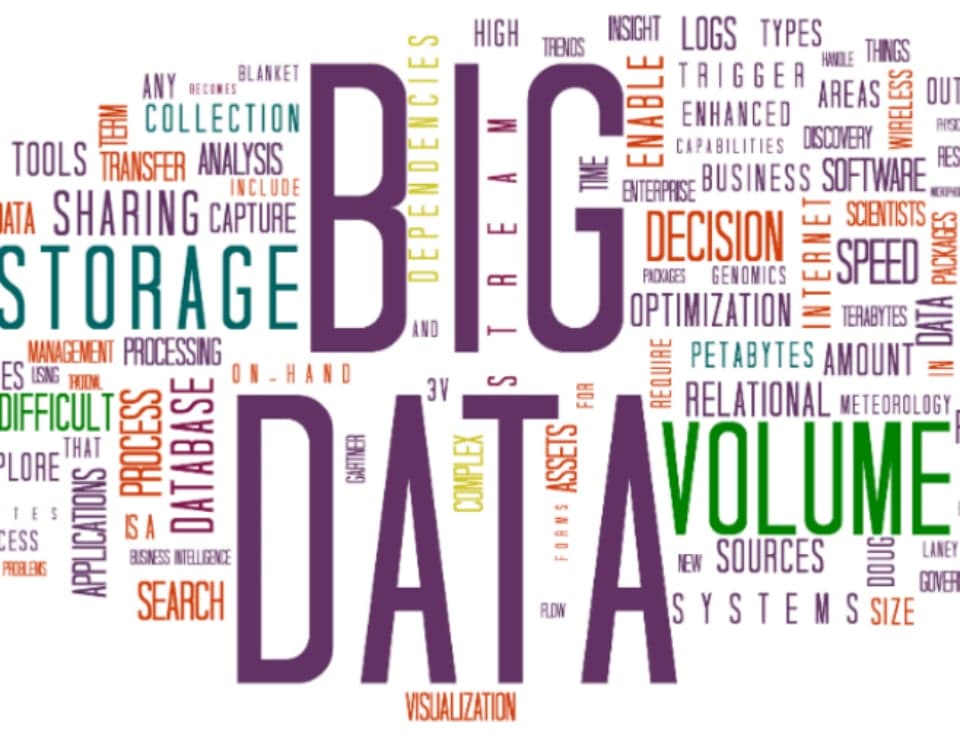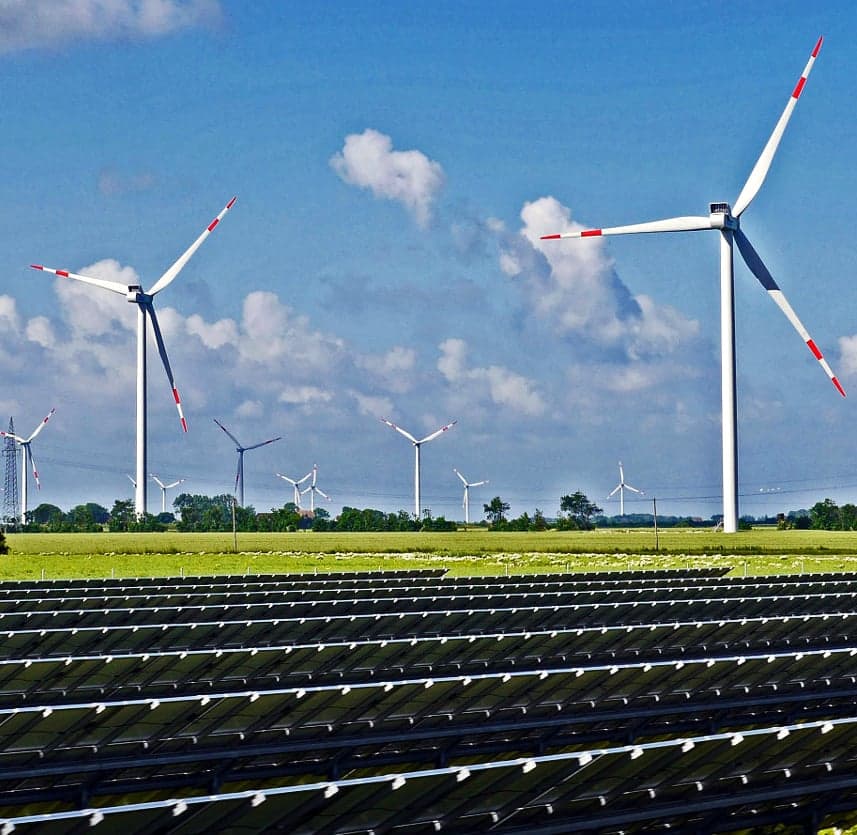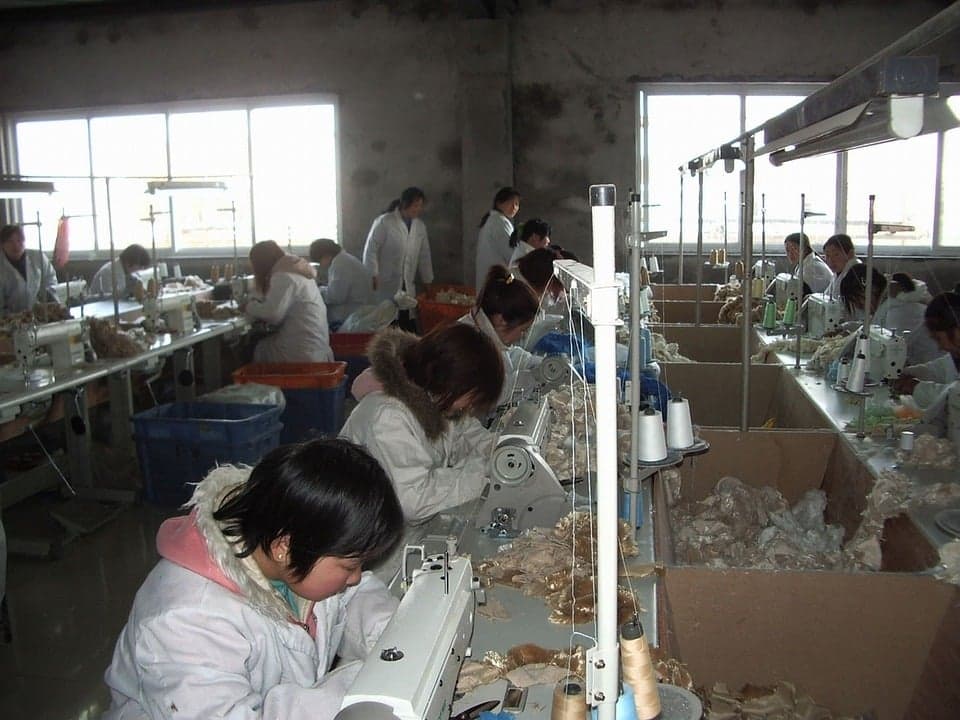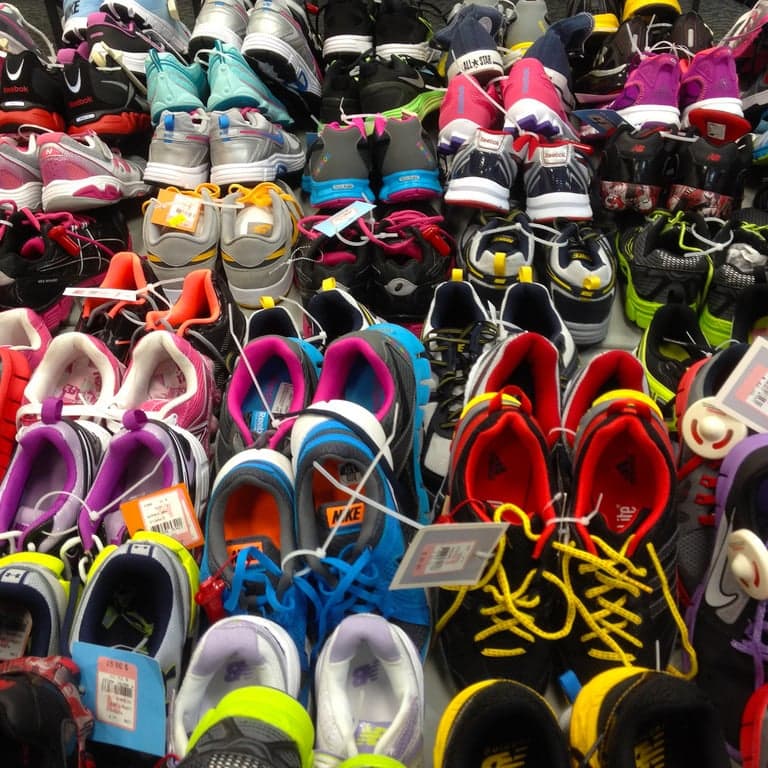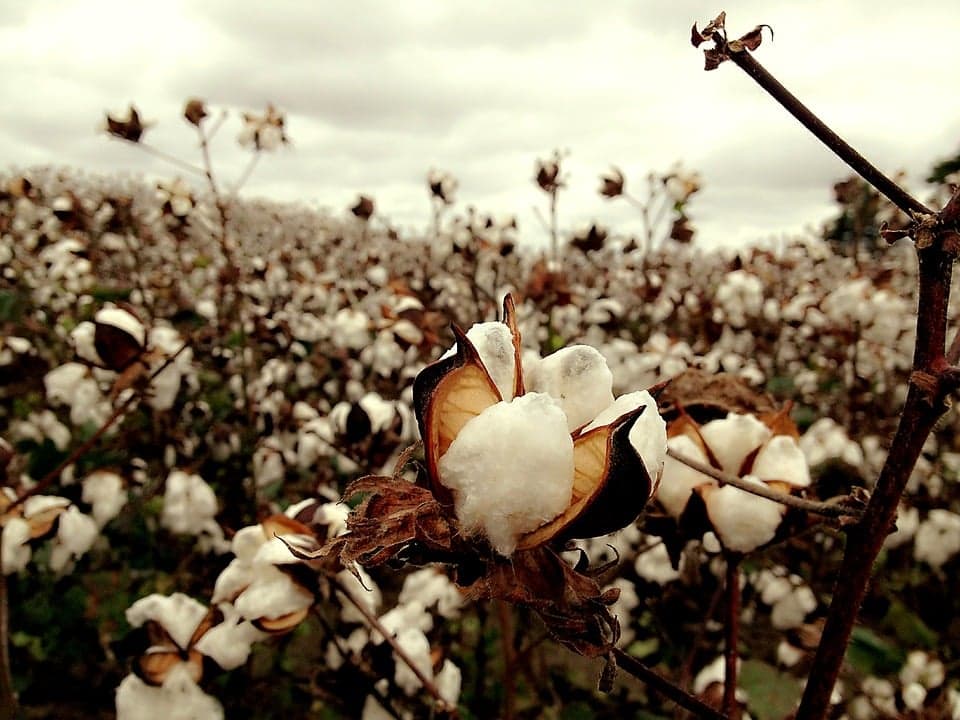This marks the last week of our academic year at Michigan State, and the globalEDGE team will be taking the summer off while team members will be graduating, starting full-time jobs, completing internships, traveling, and furthering their education in an effort to continue to contribute innovative and real-time news to the globalEDGE website when we return in the fall. During a year of virtual school and virtual work, we hope that our viewers were able to use our information to their benefit as we all take on these difficult times, and we appreciate your viewership and interaction with the site. Thank you for all of your support and we will be anticipating our return to the blog come fall.
globalEDGE Blog - By Author: Andrew Menke
Publish Date:
A unique digital asset. The definition of a nonfungible token (NFT) may be simple in writing, but its applications stem to far-reaching uses that encompass a plethora of opportunities. In its essence, nonfungible means the token can’t be exchanged for another thing of equal value and each token is an entirely original and unique piece. An NFT could be an entirely blockchain-originating image. This same image could have an exact duplicate that is a completely different NFT because of its varied blockchain code. On April 16th, 2021, a single NFT created by the infamous whistleblower, Edward Snowden, sold for 5.4 million dollars. So what are these new digital assets, and how are they being used in the global business world?
Publish Date:
The Risk Comparator tab within each Economic Classification page on globalEDGE has been updated to reflect the most recently available 2021 data. With the onset of the pandemic starting after the source, The Economist, provided its ratings last year, this year's ratings will show the impact that COVID-19 has had on countries and on the different classifications of markets in terms of their country, political, currency, sovereign, banking sector, and economic structure risk. Explore the individual links below to gain a better understanding of market trends and to see how exactly specific countries have faired in managing risk during the course of the past year.
Publish Date:
The shift to green technology has been highly covered throughout media and it is agreed on by many exports that improving society’s sustainability will be key in our future economic, technological, and health advancement. Recently, the United States’ Exxon Mobil declared its new plan to increase investment in an emerging area of carbon reduction: carbon capture technology. Although this move may appear to be simply another example of a company moving toward sustainability, there is a much bigger implication at hand.
Publish Date:
The price of copper recently rose over $9000 per metric ton for the first time since 2011, and other commodities like oil, corn, and other metals like iron ore and nickel are seeing an increase in values as the economy shows potential signs of growth. On top of the hope for economic growth, the possibility of rising inflation and a new focus on expanding the infrastructure of the renewable energy and electric vehicle markets has sent the price upward.
Publish Date:
A slew of new Business Beats have been posted to the globalEDGE website this month. Hosted by Jade Sims, the Assistant Director for International Trade Programs at the Michigan State University International Business Center, these podcast-style discussions cover a wide range of global business topics and feature a variety of guest speakers from the professional business world, academe, and government agencies that lend their insights to listeners. Head to the Business Beat page on globalEDGE by clicking the "Get Connected" drop-down menu and choosing the "Business Beat" header to explore some of the engaging discussions we recently added to our site.
Publish Date:
The World Economic Forum has put out the 2020 version of their publication of the Global Competitiveness Report. Typically an assessment of the overall productivity and health of the world, its people, and its economy, this year's edition takes a special focus on the actions needed for revival and recovery amidst the devastating COVID-19 pandemic. This report is unique, as it does not include the typical Global Competitiveness Index Rankings—which combine a variety of economic factors like stability, skills, and market size to rank the top economies—and instead focuses on how the world economy can heal and overcome some of its most glaring obstacles.
Publish Date:
The globalEDGE team is excited to return to our regular Monday through Thursday blog schedule. Members of our team took the time over our winter break to recharge, reflect, and explore and we are ready to hit the ground running to provide you, our readers, with new content during the spring semester. Continue to expect timely, intriguing, and well-prepared posts that will help you learn and expand your international business knowledge. We look forward to a great semester and, as always, we appreciate your support.
Publish Date:
As another semester comes to a close, the globalEDGE team will be heading home for winter break. In our first fully remote work experience, our team has been resilient and worked hard to provide our users with the most up-to-date and interesting information possible. As a team, we appreciate your support in reading our blogs and in browsing our website and we hope that our efforts positively contributed to your learning and research goals. So, thank you for another great semester, and we will see you soon on January 11, 2021.
Publish Date:
As the seasons continue to change, fall is in full swing and will soon give way to winter in the Northern Hemisphere. For many people, this means we are in the heart of the American football season—the game serves as a center point for holidays like Thanksgiving and, with more lockdowns imminent as a result of COVID-19, will likely be a major pastime during the winter months. So, how does American football (which I’ll refer to as just football for the rest of this blog) fare as an overall market?
Publish Date:
The International Energy Agency (IEA) has published its World Energy Outlook for the year 2020. With the especially unique environment of the COVID-19 pandemic, this year’s outlook focuses on models that predict the pandemic’s potential implications over the next ten years. This, along with the prospects for accelerated energy transitions, make up the two major themes of the report.
Publish Date:
Whether listening to their favorite music, tuning into informational podcasts, catching up on captivating audiobooks, or boosting the overall volume levels of a device, millions of consumers depend on speakers as a means to output audio. Subsequently, speakers represent a critical tool for motivation, relaxation, and functionality in society. This criticality is reflected in the global speaker market, which continues to grow with consumption trends, quality improvements, and innovation.
Publish Date:
Water is a necessity for life and is one of the most valuable resources on the planet. Each year, close to four trillion cubic meters of freshwater is consumed around the world and almost every daily activity or good requires water to use or make. This fact is often overlooked, as the use of water is typically only thought of in terms of physical consumption and cleaning. In an exploration of the plethora of ways that society uses water, its role in the wellness industry is rapidly growing.
Publish Date:
Five months after the coronavirus pandemic brought global activity to a screeching halt, we are still experiencing its effects and aftermath. With such a drastic change in everyday life that occurred at what seemed like the snap of a finger, businesses everywhere have been forced to adapt to extremely challenging conditions. As a result, several companies have come up with innovative ideas that have minimized risk and allowed their respective value chains to stay intact.
Publish Date:
After a summer of internships, learning, and exploring, the globalEDGE team is returning for the 2020-2021 academic year. We are eager to take on the challenges that a remote-learning environment poses and we look forward to providing our viewers with highly valuable and interesting information. Look for the globalEDGE blog to return to its regular Monday through Thursday schedule starting next Monday, September 7th.
Publish Date:
Another semester is coming to a close, and this marks the end of the academic year for the globalEDGE team. This semester has brought with it significant and unique challenges that have forced our team, and people around the world, to adapt to a new lifestyle and embrace change as we never have before. Through it all, we hope you were able to benefit from our perseverance and continue to glean useful knowledge from our blog posts and website resources.
With that, the globalEDGE blog will be taking a break from its regular schedule throughout the summer. Until we return with exciting ideas and information in September, we hope our readers stay safe and we thank you for your interaction and viewership throughout the year.
Publish Date:
As the novel coronavirus and COVID-19 pandemic continues to captivate the world in a time freeze like experience, the changes that workplaces have had to effect have been prominent and extreme. Because of the quick spread and serious health consequences of this pandemic, many companies have opted to shift all nonessential employees to a work from home mandate. Through such an action, millions of workers across all industries across the globe now find themselves working from the confines of their respective homes rather than traveling into the office during the week. Here are two benefits and two drawbacks that are being seen as a result of the new work from home experience:
Publish Date:
As the coronavirus continues to dominate society in the media, in professional careers, and in everyday life, interesting effects have been seen in the changing regulations across industries. Because this virus is so unprecedented in its global reach, sweeping changes have been made across the world in attempts to best cope with the pandemic and to accommodate citizens. Specifically, significant alterations in the regulation and allowances can be seen at banks, in the environment, in the medical sector, and in day-to-day operations like work and school.
Publish Date:
In the United States, approximately 257.3 million people own and use a cell phone. Zoom out to the world as a whole and that number increases to 4.57 billion people. In both cases, the statistics are only expected to show increases as global income rises, interconnectedness becomes normalized across land and sea, and technology continues to advance at a rapid clip. Recently, the cell phone market in the U.S. made news when T-Mobile’s merger with Sprint was approved by a federal judge on February 11th, uniting the third and fourth largest players in the U.S. industry, respectively.
Publish Date:
Ships, trains, houses, manufacturing and power plants—each have used, or currently uses, coal as its main fuel source. Coal has long been one of the world’s top energy sources, acting as the base of nearly 30 percent of the energy created across the globe and almost 40 percent of global electricity production. However, after Murray Energy Corporation became the eighth coal company on October 29th, 2019 to declare bankruptcy in the past 14 months, there appears to be a significant downturn occurring within the industry. Murray Energy is the largest privately held coal company in the United States and joined seven other companies within the industry, including Cloud Peak Energy and Westmoreland Mining, in filing for bankruptcy.
Publish Date:
There is really no other way to put it—every day, a countless number of people shave hair off of their face and body with razors. The image of ideal, clean-shaven men and women has become a cultural staple of a large portion of society, marking the sign of adulthood and prestige amongst much of the global population. However, recent disruptions to the global razor industry—including the trend of facial hair and introduction of subscription blade alternatives—have changed the playing field for the first time in almost a century.
Publish Date:
After a brief hiatus for our winter break, the globalEDGE team is back on campus and will return to our regular blog schedule. This semester, you can again expect to read insightful and informative posts Monday through Thursday of each week. We look forward to reconnecting with our audience and are excited for the next 16 weeks.
Publish Date:
As the academic semester comes to an end for the globalEDGE team, we would like to thank our users for your continued support. From technology to international relations, we hope that our blogs were able to provide readers with exciting perspectives on current international business topics. The globalEDGE team will be taking a break from posting on our blog section over the coming winter break but will be back in action at the start of the next semester on January 6th. We hope everyone has a happy holiday season and we cannot wait to return in the new year.
Publish Date:
The Country and State Trade Statistics sections of the globalEDGE website was recently updated to reflect the most recent 2018 data. This data includes global exporter and importer rankings, total trade statistics, rankings of top trade partners, and the leading goods imported and exported from an area. Be sure to check out these pages at the links below to learn more about how trade is played out around the world.
Publish Date:
The globalEDGE team has updated the risk assessments for each country within the website's Economic Classification section to reflect the most recent data available. Here, users can explore countries by their classification in either the emerging market, frontier market, or mature market. Within each of these markets, the risk comparator tab allows for the comparability of countries based on six risk factors: country, political, currency, sovereign, the banking sector, and the economic sector. Make sure to check out this new update for a better understanding of market risk around the globe through the links below.
Publish Date:
The global pork market is currently facing a major obstacle: African swine fever. This disease has severely cut China’s hog population, which is predicted to drop around 40 percent from the beginning of 2018 to 2020. This will consequently reduce global pork production by 10 percent in 2020 and is especially consequential because China is the world’s leader in pork sales, yielding a value of 118.2 billion dollars in 2018. The disease and its negative effect on the ability of the pork industry to meet market demand have caused pork and bacon prices to rise, likely leading to the largest jump in price since the mad cow disease epidemic of 2004. With such a big shift in the meat industry, questions arise about how the pork segment will respond and how this shift will impact the meat industry as a whole.
Publish Date:
The World Economic Forum has released the latest version of their annual publication, The Global Competitiveness Report, which turned 40 years old this year. The 2019 report highlights the cycle of low levels of productivity growth in the world economy despite the injection of over 10 trillion dollars by central banks. Although the overall tone of the report is negative, it emphasizes the ability of countries pursuing a holistic approach to socio-economic challenges to set themselves ahead on the economic frontier.
Publish Date:
Since writing a blog, “Worldwide Popularity of Streetwear Ascending,” in December of 2017, the global streetwear market and culture has continued to rise in popularity. Beginning as a niche market that originated mainly within skateboarding and inner-city communities, the streetwear brand and aesthetic has become a mainstream influence that reaches star athletes and world-famous actors. With appeal centered especially in Asia and the United States, streetwear captures two of the world’s largest audiences and is now rivaling the status of luxury brands like Italy’s Gucci and France’s Louis Vuitton.
Publish Date:
The world population continues to grow at a rapid rate, currently sitting at over 7.5 billion people. With each individual comes the necessity for resources that foster survival and growth—mainly, humans need food and water. As society continues to expand to an astounding size, how much food is really needed to meet our growing needs?
Publish Date:
Whether you call them soda, pop, coke, or fizzy drinks, soft drinks are popular across the globe and are defined as a carbonated, nonalcoholic beverage by the Merriam-Webster dictionary. The term soft drink was originally coined to distinguish flavored drinks from hard liquor, and the first soft drinks were marketed in the 17th century as a combination of lemon juice, water, and honey. Later, the first carbonated drinks appeared in the 18th century as health remedies. Today, soft drinks are mass-produced using a combination of water, carbonation, flavoring syrup, and bottling the product to sell to consumers.
Publish Date:
After a busy summer of international travel, work-related, and academic pursuits, the globalEDGE team is returning to Michigan State University for the 2019-2020 academic year. With six new members, the team anticipates sharing exciting, fresh ideas and information on the globalEDGE blog—again featuring a Monday through Thursday schedule. Our team will also be working diligently to update website content and provide users with comprehensive and useful business knowledge to accommodate their goals. We look forward to a great year!
Publish Date:
From cheese to milk to butter, yogurt, and ice cream, dairy is found in many forms across the globe and is used and consumed in a multitude of ways throughout the world’s varying cultures. Dairy plays an essential role as the base ingredient of many foods and is a major industrial product in many economies. The main source of dairy comes from cows, which can be raised and bred in mass numbers to obtain product that satisfies the demand of the population.
Publish Date:
Socks have long been an important clothing item to society, dating back to around the eighth century. Today, socks are mass produced around the world and are an essential item in many peoples’ wardrobe. From athletic, to dress, to casual, there are now a variety of types of socks that are catered to each individual’s occasion and a plethora of patterns and colors exist within these categories. Whether functioning as an outfit essential, stylish accent piece, or just to keep feet warm or cool, socks have displayed abundant uses across countries.
Publish Date:
As spring break passes for students and people around the world begin to get a taste of warmer spring weather, the global ski industry will work to close out the winter season with strong earnings and participation. Millions of people elect to swarm to the snowy peaks of ski resorts each year, taking on the slopes in hopes of finding leisure, winning a competition, or satisfying their adventurous spirit. With the recent passing of the 2018 Winter Olympics in PyeongChang, China, the industry is hoping to capitalize on recent attraction to winter athletics in previously lacking regions like Russia and previously mentioned China.
Publish Date:
The State Insights section was recently updated by the globalEDGE team. These sections include background information, important trade destinations such as ports and major cities, and a list of trade contacts for each of the 50 American states. In addition to this information, Fortune 1000 company rankings and data, trade statistics, and resources designed to enhance your business knowledge are included within the State Insight sections.
Publish Date:
In the mid-2000’s, smartphones took the world by storm. Offering a plethora of abilities and functions to users, these intricate devices were obsessed over by people around the world, connecting users to anything they desired with the click of a button or a tap of a screen. Recently, however, the smartphone market has experienced several missteps and subsequent difficulties selling their products to consumers.
Publish Date:
Jamaica is a small island country in the Caribbean Sea, about half the size of the American state, New Jersey. Since its origin, the country has functioned through an agricultural emphasis. Settled by the Spanish and English in its early discovery, Jamaica was used as a slave island that farmed staple crops to accommodate world trade. Even after gaining independence in 1962, the country’s economy remained agricultural as a consequence of the past slavery.
Publish Date:
Transportation has long been one of the most essential and transformative processes in society. Today, e-commerce, fast-paced business environments, and a focus on improving logistics thrust transportation into the spotlight as a necessary day-to-day operation and the main form in which these actions are carried out is automation. Cars have a wide variety of human uses, from picking up children from school, to moving perishable goods across land, to clearing snowy roads efficiently. Because of this, the automotive industry continues to be one of the largest and most talked about markets on Earth.
Publish Date:
A whirlwind news topic that seems to reveal new headlines and developments each day, technology is changing society more than ever before. As companies and consumers key in on how technology has the potential to positively and negatively impact their futures, research, testing, and product roll-outs are being conducted around the clock to create new innovations and introduce them to a global market hungry for personalization and advancement. This blog will aim to shed light on how technology will impact three key economic industries: transportation, 3D printing, and online consumption.
Publish Date:
Watches have long been a staple accessory for both men and women across the globe, worn as both a fashionable piece to add to an outfit and a useful tool for keeping track of the time of day. The additional value watches create as a generational keepsake, and their tendency to be an item that can hold its value over many years makes watches favorable investments or gifts. With a variety of options from low to high price ranges, sport to luxury watches that feature varying materials, and newly popular smartwatches, the global watch market continues to do well despite the disruption that smartphones and similar technologies have caused.
Publish Date:
A necessary and functional accessory for students of all ages, day-to-day employees, and travelers across the globe, backpacks are widely consumed as a staple of transit and activity. With their versatility that a variety of uses—from storing school supplies, to holding electronics, to carrying clothes and food—backpacks provide users with many ways to tote their belongings and are one of the most invested in goods with total sales value projected to climb over 25 billion dollars in 2018, and increase to over 30 billion dollars by 2021. The backpack market currently holds a value of about 16-20 billion dollars and is expected to hold over 25 billion dollars in 2022.
Publish Date:
Qatar, a small, wealthy country in the Middle East, announced its resignation from the Organization of the Petroleum Exporting Countries (OPEC) on December 3rd. OPEC is the most powerful oil cartel in the world, holding a near monopoly over the oil industry that allows the group--which now consists of 14 countries, most notably of which are Saudi Arabia, the UAE, Iraq, and Iran—to exercise nearly complete control of oil prices and production. Russia also holds an alliance with OPEC, more specifically with Saudi Arabia, and shares an influence on the oil market.
Publish Date:
Country and State Trade Statistics have been updated on the globalEDGE. These statistics summarize exports and imports via a variety of metrics, such as importer and exporter rank, total trade balance, top 10 export and import partners for each country and state, top 10 export and import goods for each country and state, and the impact of trade for each state. A comprehensive list of all trade values and goods can also be found for every country and state.
Publish Date:
A roof over your head and a bed to sleep in—shelter is one of the most coveted and widely sought after needs in our world. With billions of homes built around the world as a way to protect people from the outdoor elements and provide refuge to rest, it’s no wonder that the global real estate market is one of the most highly-valued and invested-in sectors in the world. Holding a total estimated value of 217 trillion dollars in 2017, 75 percent of which comes from residential property, real estate is a massively important component of the worldwide economy. In fact, the market is expected to generate 4.263 trillion dollars of revenue alone by 2025.
Publish Date:
Halloween, or All Hallows’ Eve, wouldn’t be complete without one of its most distinguishing symbols—the pumpkin. Each year, people from countries like the United States, the United Kingdom, Germany, and Ireland purchase, pick, carve, and/or display these bright orange gourds in celebration of Halloween. Pumpkins also mark an essential decoration, food staple, and representation of the fall season, and consequently have a significant place in the global economy.
Publish Date:
At the heels of the United Nation’s groundbreaking report detailing the necessity for “unprecedented changes in the next decade” to avoid permanent damage to the Earth’s environment, sustainability and waste management in the business world, and beyond, have become essential factors of commerce across the globe. The concept of creating products and services that are sustainable in the long-run is integrating itself as a key driver of companies’ operations and value chains, and innovation is necessary to achieve substantial results. While efforts to keep our planet living intensify, so too will the call for businesses to operate environmentally safe processes.
Publish Date:
One of the worlds premier decorations, art is hung, stood, and displayed in places all over the world. Whether a wall painting, sculpture, or online design, art is a topic that is frequently overlooked as a major influence on society. Much like it can be overlooked as something that simply belongs on a wall, the global art market is not often talked about in the economy. Despite this, the art industry is a 63.7 billion dollar global market that deserves attention.
Publish Date:
To a large group of the world population, luxury brand goods sit on a mythical alter—their rarity, expensive price point, and high demand make them difficult products to obtain. From items like watches and handbags to clothing and shoes, these retail brands carry the ‘best of the best’ merchandise and make it a point to tell consumers. Recent news from the United Kingdom-based company, Burberry, shows the lengths that luxury brands go to in order to preserve their pristine, high-status image, and whether or not they are worth it.
Publish Date:
The sport of baseball boasts ties across the world, carrying tradition and holding economic value in countries like the Dominican Republic, Japan, China, and the U.S. For countries around the globe, baseball has been, or is, necessary to their way of life. Recently, however, baseball has seen a substantial decrease in its popularity at all levels. From Major League Baseball to Little League, fewer people are participating in, purchasing goods from, and supporting baseball games. This has a direct influence on many global economies, specifically regarding the equipment with which baseball is played. The question for many retailers and consumers is, what does the future hold for the sport of baseball and its business operations?
Publish Date:
One of the world’s favorite beverages and a major source of caffeine for many students and employees, coffee continues to be an integral factor in society’s daily routine. According to Business Insider, coffee is the second most sought-after commodity in the entire world, with an industry that is worth over $100 billion across the globe. In terms of exporting alone, the industry is valued at $20 billion and continues to be on the rise—on average, 500 billion cups of coffee are consumed on Earth every year.
Publish Date:
Artificial limbs, manufacturing machines, and transportation drones all share one common trait: the implementation of robotics. One of the fastest growing sectors in the world, robotics and its applications are revolutionizing the way society conducts our lives. The recent data boom has produced a newfound excitement around all technology, using the benefits of mass statistics to carefully craft new innovative products. Robotics has been one of the largest, if not the largest, benefactors from this trend, using systems like cloud storage, artificial intelligence, and responsive programming to evolve into a highly intelligent and efficient tool. Currently, technology stocks are growing tremendously compared to past years and robotics seem to be on the cutting edge of a new era.
Publish Date:
This is the third post in a five-part blog series focused on future trends in business.
Technology is an ever-increasing field, especially in today’s world. The advancements we are currently experiencing are greater than the entirety of society’s past. By 2020, the amount of information available via digital gateways will grow from the current five zettabytes to 50 zettabytes (in perspective, one zettabyte is equal to 10^12th gigabytes, or over 15 billion flash drives). Subsequently, for almost all global actions, there are digital footprints left behind—every Google search in China, use of a Nest home system in the United States, or activation of a trending smartphone app in South Africa leaves behind data and information. Enter, big data.
Publish Date:
Around the globe, playing your favorite music, making phone calls, and listening to lectures or podcasts has been made more convenient with the help of one of the world’s most popular products—headphones/earbuds. Strolling through college campuses, it’s a common sight for students bustling to and from classes to don a pair of earbuds or headphones. In global workplaces, many employees play music through headphones to increase their focus and achieve better results. Taking private calls has been greatly aided with the use of earbuds that work much like Bluetooth earpieces but offer much better quality—the noise canceling functionality that many of these products feature to make it simple to tune out background information and allows calls to be made without having to step out of a room. This coveted usefulness has people around the world buying into the headphone and earbud market.
Publish Date:
Microwavable TV dinner trays, notebooks, tissues, packages, and newspapers are all derived from one of the world’s most used products—paper. According to Green America, “40 percent of the world’s industrial logging goes into making paper, and is expected to reach 50 percent in the near future.” Furthermore, the global consumption of paper has skyrocketed 400 percent in the last four decades, and in the last 20 years alone, the use of paper products has gone up from 92 million tons to 407 million tons in 2014. The worldwide paper industry is the fifth largest consumer of energy and is credited for four percent of the entire population’s energy use.
Publish Date:
Chewing-gum—from the baseball diamond to office workplaces, over 100,000 tons of gum is chewed per year around the world. Dating back to ancient times, different versions of gum have been used as a means of trade in Africa, stress relievers in Greece, and a construction material in Central America. To this day, chewing-gum continuous to hold its position as a popular commodity on our planet.
Publish Date:
This is the third post in a five-part blog series focused on the energy industry.
As our world’s supply of nonrenewable resources slowly dwindles, society is being forced to consider new methods of generating energy in a continuously growing world. A major focus has been put on turning earth’s natural products like wind, sun, and water, and additionally nuclear power, into devices of energy production. Fifty countries agreed at the Climate Vulnerable Forum to make 100% of their energy renewable by 2050. The construction of wind turbines, solar panels, and nuclear reactors is spearheading this dive into renewable energy while having a definite impact on business.
Publish Date:
Ice cream—the frozen dessert has become somewhat a staple of society’s diet, with countries across the globe indulging on and/or producing the dairy treat. Ice cream is available for purchase at a wide variety of retailers—spanning from grocery stores to restaurants to street carts—and the variety is expanding each year with the additions of new flavors and consistencies like gelato. Overall, the market is expected to be worth $97.3 billion by 2023.
Publish Date:
This winter, Australia gave life to business extraordinaire Elon Musk’s mega-battery, changing the scope of energy production as we know it. The battery is the size of an American football field and powers 30,000 homes in Southern Australia and was built in the Tesla founder’s guaranteed 100-day time frame. On the heels of his accomplishment, Musk has announced another mega-battery to be built, putting on full display the growing market of batteries as the future of society’s power source.
Publish Date:
Flipping on the television, powering up a gaming device, and relaxing on the couch has become a routine for millions of people around the globe—in fact, it’s estimated that more than 1.8 billion people are playing video games worldwide on a range of devices from smartphones, to game consoles and computers. In the US alone, there are 2,858 video game companies and 65,678 workers within those companies based on Forbes estimates. According to Newzoo, these people along with the billions of players will help the market value grow 7.8 percent to $108.9 billion in 2017. The major leader in the market is the mobile games sector, which accounts for 42 percent of revenue—$46.1 billion—and the profound interest from the Asia-Pacific market. With the current growth expected to continue, the video game market is expected to reach $128.5 billion by the year 2020.
Publish Date:
A collaboration between Supreme, a top-tier streetwear brand, and Louis Vuitton, a high-end fashion company, has produced a hoodie that costs upwards of $7 thousand. Another collaboration between Supreme and The North Face, a winter outerwear company, gave way to a $600 backpack. So what’s causing this uptick in prices for everyday items? Streetwear—the casual clothing of a style worn especially by members of various urban youth subcultures—is one of the world’s fastest growing industries, with an estimated value of $309 billion.
Publish Date:
Each day, millions of people fill up reusable water bottles during school, sports, and work, continuing to grow the trend of ditching clear plastic bottles for their refillable—and more environment-friendly—counterparts. Fueled by an increase in online shopping, reduction in overall price, and easy accessibility, the consumption of reusable water bottles across the globe is estimated to reach 3,902,642 thousand units in 2017 alone. The implementation of these types of bottles into sports and travel shows the most opportunity for the market to grow, finding more efficient and practical ways for users to store and drink water without negative health and environmental impacts.
Publish Date:
This is the final post in a five-part blog series focused on International Education Week.
International Education Week wouldn’t be complete without the central force that drives international education—international students. With a record 1.08 million foreign students enrolled in approximately 2,100 US institutions, education in America is as enticing as ever. Students from China account for nearly a third of foreign enrollees, with 350,000 students coming to the US in 2016—a seven percent increase from 2015. Indian students are the second most enrolled at 53,000 students, and Brazilian students come in at third with 13,000 students. Times Higher Education states that schools like our own Michigan State University have become “international powerhouses” regarding global education. According to Alyson L. Grunder, a deputy assistant secretary of state for policy, “The US higher education sector remains the global leader in welcoming students from around the world, and at the same time, we are committed to increasing opportunities to study abroad for Americans.”
Publish Date:
As Halloween week winds down, consumers across the nation will begin the process of slowly making a dent in a pile of over 600 million pounds of one of the world’s most coveted treats—candy. Candy—also called confectionery and comprised of chocolate, sugar, and gum products—has been one of the most popular goods on the globe since 1894, with worldwide confectionery sales anticipated to increase 3.2 percent by 2022 and valued at 85.5 billion dollars in 2016.
Publish Date:
This is part four of a five-part blog series on the evolution of the textile industry over time.
The textile industry is one of the largest economic markets in the world, generating $450 billion and employing over 25 million people across the globe. It’s estimated that over 120 billion pounds of textiles are made each year, a number that is ever-increasing because of constant high consumer demand. Specifically, cotton consumption rates feature all-time highs, with an annual demand of over 120 million tons.
Publish Date:
The sneaker industry is becoming a new fad in today’s society, and led by sportswear behemoths Nike and Adidas, is transforming the market into one of the world’s most profitable and demanding sectors. Propelled by the resurgence of Adidas footwear in popular models like the “Ultra boost,” “NMD,” and rapper Kanye West’s coveted creation, the “Yeezy,” and the continued success of Nike in models such as the “Air Jordan” and “Air Max,” consumers are lining up to purchase sneakers more than ever. One way producers are ensuring the continued success of their products is by making purposely small amounts of their sneakers in order to create an atmosphere of excitement and exclusiveness that buyers aim to obtain. This then allows the producers to release the same shoe in larger quantities at a later date—a restock—and gain high sales rates, making their profit margins even larger. Transparency Market Research expects the world sneaker market to be worth $220.2 billion by 2020.
Publish Date:
In the last part of this week's series on cash crops, we explore the top two African cash crops.
Africa has long been rich in natural resources, consistently providing other nations with opportunities to obtain its plentiful supply of cotton and cocoa—two of the world’s most important cash crops. According to Merriam-Webster, a cash crop is “a readily salable crop (such as cotton or tobacco) produced or gathered primarily for market.” These crops aim to provide a sustainable way of life for farmers across the continent and are a major reason much of the world’s nations were and still are interested in exploring and investing in Africa.









